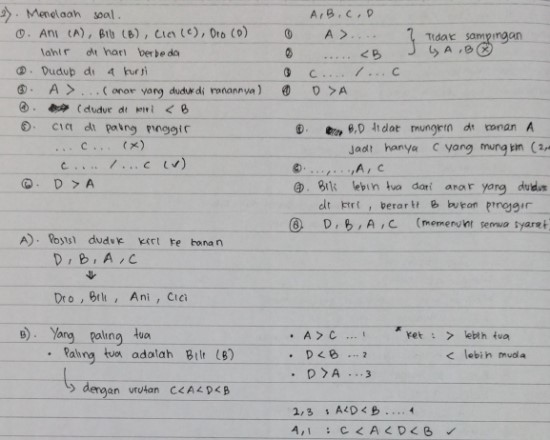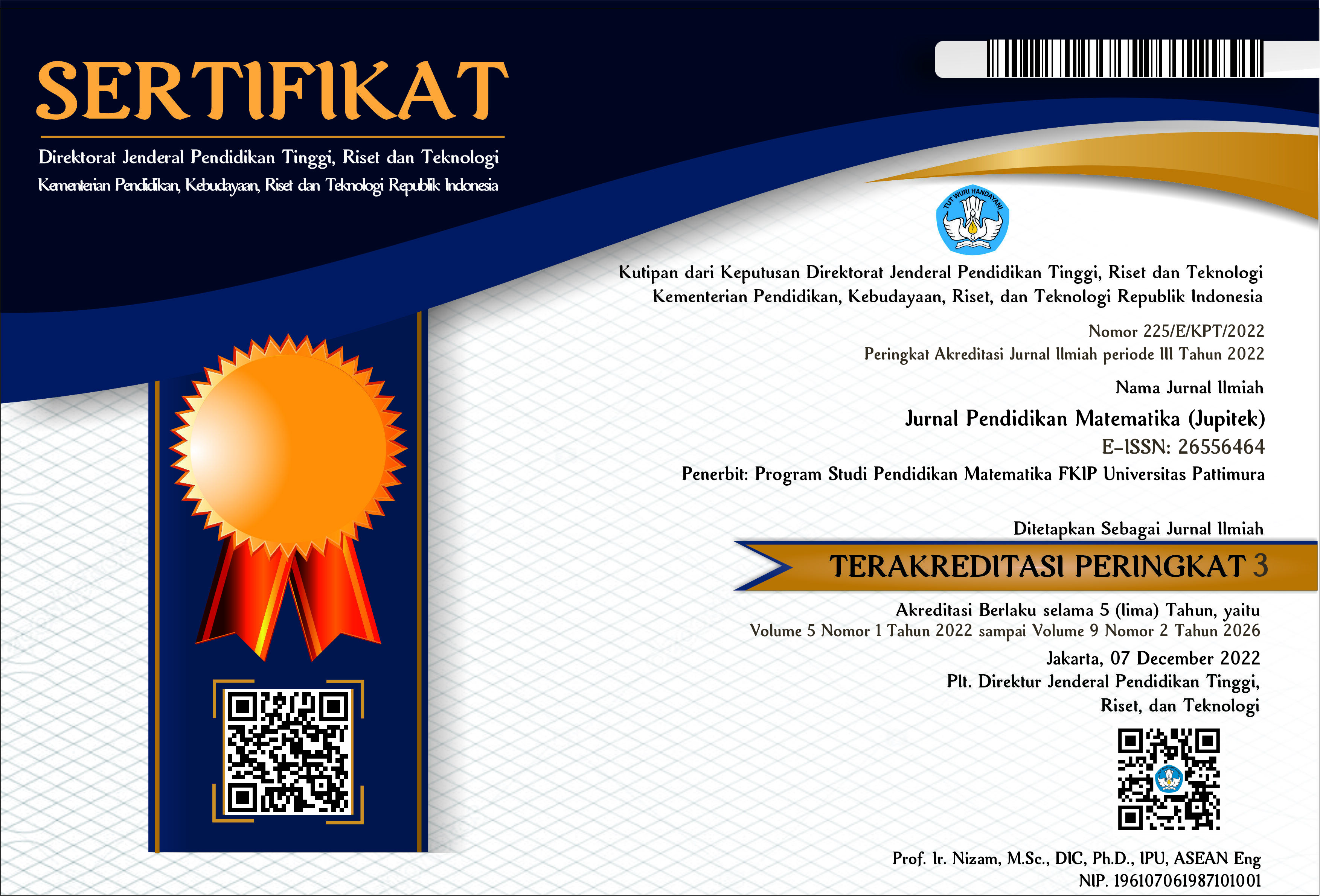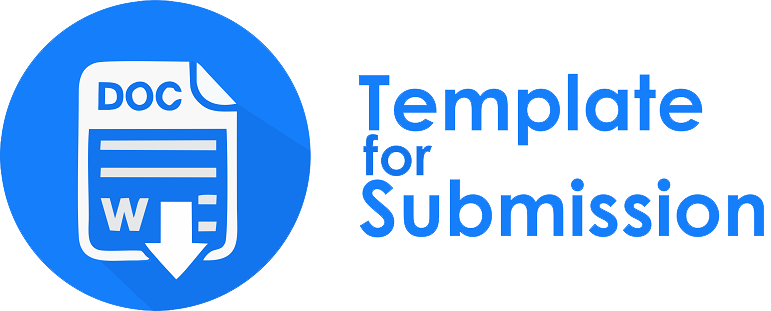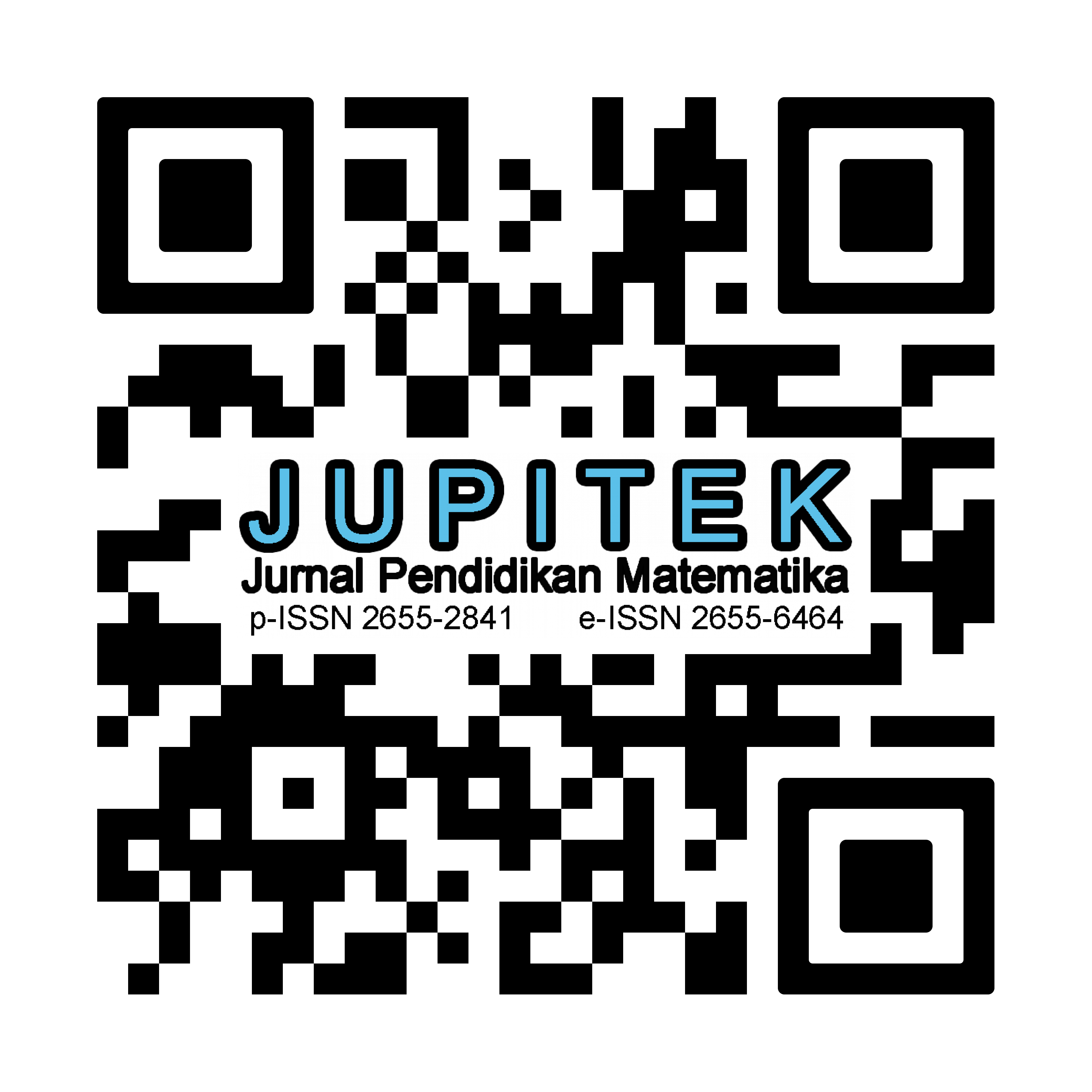PROMOTING MATHEMATICAL JUSTIFICATION THROUGH REALISTIC MATHEMATICS EDUCATION CLASSROOM
Abstract
The importance of mathematical justification in all classrooms is emphasized by reform movements in mathematics education. However, previous studies reveal that encouraging justification in mathematics classes is troblesome for mathematics teachers at all school levels. This present study is aimed to find out how justification help students to develop their mathematical understandings. To answer this question, we first determined the role of justification in teaching and learning process and how good students in justifying their answers. Design research was chosen as an appropriate mean to achive that goal. The study was conducted in a state university in Yogyakarta involving four students from fifty-one students as our focus group and one of researchers as a lecturer. Justification was the focus on this study and to promote it we chose RME as an approach that served as a learning environment. In this study, all data collected from classroom observation, group observation, students’ works, video recordings, field notes during teaching experiment, and students’ final writen test. Students’ works then analyzed using a justification rubric and describe thoroughly by considering other data collected during teaching learning process. The study revealed that there were some roles of justification in RME classroom, namely encouraged conceptual understanding, supported mathematical skill, promoted long lasting skill, and influenced social relationship. In this study, most students in our focus group have already made a good justification which was assessed by the points in the CLEAR rubric. Students wrote their solutions equipped by signs or simbols, made labels, used a complete sentence to answer the question, and elaborated procedures throroughly
Downloads
References
Ayalon, M., & Hershkowitz, R. (2017). Mathematics teachers ’ attention to potential classroom situations of argumentation. Journal of Mathematical Behavior, November, 0–1. https://doi.org/10.1016/j.jmathb.2017.11.010
Bell, A. W., & 1976. (1976). A Study of Pupils ’ Proof-Explanations in Mathematical Situations. Educational Studies in Mathematics, 7(1), 23–40.
Boaler, J., & Staples, M. (2008). Creating mathematical futures through an equitable teaching approach: The case of Railside school. Teachers College Record, 110(3), 608–645. https://doi.org/10.1177/016146810811000302
Cioe, M., King, S., Ostien, D., Pansa, N., & Staples, M. (2015). Moving Students to “the Why.” Mathematics Teaching in The Middle School, 20(8), 484–491.
Conner, A., Kosko, K. W., Staples, M., Cirillo, M., Bieda, K., & Newton, J. (2017). 2017 PME-NA Working Group : Conceptions and Consequences of What We Call Argumentation, Justification, and Proof. In E. Galindo & J. Newton (Eds.), Proceedings of the 39th annual meeting of the North American Chapter of the International Group for the Psychology of Mathematics Education (Issue October, pp. 1464–1473). Hoosier Association of Mathematics Teacher Educator.
De Villiers, M. (2002). Developing Understanding for Different Roles of Proof in Dynamic Geometry. ProfMat, October. http://mzone.mweb.co.za/residents/profmd/profmat.pdf
Francisco, J. M. (2022). Supporting argumentation in mathematics classrooms: The role of teachers’ mathematical knowledge. Lumat, 10(2), 147–170. https://doi.org/10.31129/LUMAT.10.2.1701
Freudenthal, H., & Reidel, D. (1983). Didactical Phenomenology o f Mathematical Structures,.
Gravemeijer, K., & Cobb, P. (2006). Design research from a learning design perspective. In J. van den Akker (Ed.), Educational Design Research (Issue May 2014, pp. 45–85). Routledge.
Hähkiöniemi, M., Hiltunen, J., Jokiranta, K., Kilpelä, J., Lehesvuori, S., & Nieminen, P. (2022). Students’ dialogic and justifying moves during dialogic argumentation in mathematics and physics. Learning, Culture and Social Interaction, 33(February). https://doi.org/10.1016/j.lcsi.2022.100608
Heuvel-Panhuizen, M. Van den. (2020). Mathematics in Teams—Developing Thinking Skills in Mathematics Education (M. Van den Heuvel-Panhuizen (ed.)). Springer. https://doi.org/10.1007/978-3-030-33824-4_2
Hiebert, J., Carpenter, T. P., Fennema, E., Fuson, K., Human, P., Murray, H., Olivier, A., & Wearne, D. (1996). Problem Solving as a Basis for Reform in Curriculum and Instruction: The Case of Mathematics. Educational Researcher, 25(4), 12. https://doi.org/10.2307/1176776
Hunter, J., & Anthony, G. (2008). The Development of Students ’ Use of Justification Strategies. Proceedings of the 31st Annual Conference of the Mathematics Education Research Group of Australasia, 265–272.
Hunter, J. M. (2007). Developing Early Algebraic Understanding in an Inquiry Classroom A thesis presented in partial fulfilment of the Master of Education. Massey University.
James, C., Casas, A., & Grant, D. (2016). Using Scaffolding to Scale-up Justififcations. Mathematics Teaching in the Middle School, 22(5), 294–301. https://doi.org/10.5951/mathteacmiddscho.23.1.0004
James, C., Philiben, L., & Knievel, M. (2016). Doing the Math: Supporting Student Justifications. 21(7), 416–423.
Kazemi, E. (1998). Research into Practice: Discourse That Promotes Conceptual Understanding. Teaching Children Mathematics, 4(7), 410–414. https://doi.org/10.5951/tcm.4.7.0410
Kazemi, E., Ghousseini, H., Cordero, E., Sam, S., Elzena, P., Alison, M., & Resnick, F. (2021). Supporting teacher learning about argumentation through adaptive , school ‑ based professional development. ZDM – Mathematics Education, 53(2), 435–448. https://doi.org/10.1007/s11858-021-01242-5
Lannin, J., Baker, D., & Townsend, B. (2006). Why , Why Should I Justify ? Mathematics Teaching in The Middle School, 11(9), 438–443.
Larbi, E., & Mavis, O. (2016). The Use of Manipulatives in Mathematics Instruction | LD OnLine. Journal of Education and Practice, 7(36), 53–61. http://www.ldonline.org/spearswerling/The_Use_of_Manipulatives_in_Mathematics_Instruction
Liang, C. B. (2020). Justification in Mathematics. Office of Education Research (OER), NIE.
Mata-pereira, J., & Ponte, J. (2017). Enhancing students ’ mathematical reasoning in the classroom : teacher actions facilitating generalization and justification. Educational Studies in Mathematics, 96, 169–186. https://doi.org/10.1007/s10649-017-9773-4
McCrone, S. S. (2005). The Development of Mathematical Discussions: An Investigation in a Fifth-Grade Classroom. Mathematical Thinking and Learning, 7(2), 111–133. https://doi.org/10.1207/s15327833mtl0702_2
Melhuish, K., Fasteen, J., Thanheiser, E., & Fredericks, J. (2015). Teacher Noticing of Justification: Attending to The Complexity of Mathematical Content and Practice. In H. Bartell, T. G., Bieda, K. N., Putnam, R. T., Bradfield, K., & Dominguez (Ed.), Proceedings of the 37th annual meeting of the North American Chapter of the International Group for the Psychology of Mathematics Education. (pp. 748–755). East Lansing.
NCTM. (1991). Professional standards for teaching mathematics: related to dis. In Nctm (Vol. 2).
NCTM. (2000). Principles and Standards for School Mathematics. The National Council of Teachers of Mathematics, Inc.
Rizkianto, I. (2013). Norma Sosiomatematik Dalam Kelas Matematika. Prosiding Seminar Nasional Matematika Dan Pendidikan Matematika, November, 978–979.
Sarumaha, Y. A. (2016). Perubahan Pembelajaran yang Berpusat pada Guru ke Berpusat pada Siswa. Intersections, 1(1), 1–10.
Sarumaha, Y. A. (2018). Justifikasi dalam Pembelajaran Matematika. Prosiding Seminar Nasional Etnomatnesia, ISBN: 978-602-6258-07-6, 286–295.
Sarumaha, Y. A., Putri, R. I. I., & Hartono, Y. (2018). Percentage Bar: A Model for Helping Fifth Grade Students Understand Percentages. Mosharafa, 7(2), 155–166.
Staples, M. E., Bartlo, J., & Thanheiser, E. (2012). Justification as a teaching and learning practice: Its (potential) multifacted role in middle grades mathematics classrooms. Journal of Mathematical Behavior, 31(4), 447–462. https://doi.org/10.1016/j.jmathb.2012.07.001
Van Den Heuvel-Panhuizen, M. (2000). Mathematics education in the Netherlands: A guided tour. Freudenthal Institute CD-Rom for ICME9, 2(March 1999), 1–32. http://www.staff.science.uu.nl/~heuve108/download/VandenHeuvel-Panhuizen_papers-about-RME/RME-topics/other-rme-topics/vdHeuvel-2000_rme-guided-tour.pdf
Van Den Heuvel-Panhuizen, M., & Drijvers, P. (2014). Realistic Mathematics Education. In S. Lerman (Ed.), Encyclopedia of Mathematics Education (pp. 521–525). Springer Dordrecht Heidelberg. https://doi.org/https://doi.org/10.1007/978-94-007-4978-8.
Van Zanten, M., & Van Den Heuvel-Panhuizen, M. (2021). Mathematics curriculum reform and its implementation in textbooks: Early addition and subtraction in realistic mathematics education. Mathematics, 9(7). https://doi.org/10.3390/math9070752
Widjaja, W. (2014). Year 3 / 4 Children ’ s Forms of Justification. In A. P. J Anderson, M Cavanagh (Ed.), Mathematics Education Research Group of Australasia. Annual Conference 37th (pp. 694–697). Mathematics Education Research Group of Australasia.
Wood, T., Williams, G., & McNeal, B. (2006). Children’s mathematical thinking in different classroom cultures. Journal for Research in Mathematics Education, 37(3), 222–255

Copyright (c) 2022 Yenny Anggreini Sarumaha, Ilham Rizkianto

This work is licensed under a Creative Commons Attribution-NonCommercial-ShareAlike 4.0 International License.
License and Copyright Agreement
By submitting a manuscript to Jurnal Pendidikan Matematika (JUPITEK), the author(s) certify and agree to the following terms:
- Originality and Authority: The submitting author is authorized by all co-authors to enter into this agreement. The manuscript describes original work that has not been published previously in a peer-reviewed journal, nor is it under consideration for publication elsewhere.
- Approval: Its publication has been approved by all author(s) and by the responsible authorities of the institutions where the work was carried out.
- Rights: The authors secure the right to reproduce any material that has already been published or copyrighted elsewhere.
- Licensing and Copyright: Authors retain the copyright to their work.
- License Grant: The authors grant Jurnal Pendidikan Matematika (JUPITEK) the right of first publication, with the work simultaneously licensed under the Creative Commons Attribution-NonCommercial-ShareAlike 4.0 International (CC BY-NC-SA 4.0).
- Self-Archiving: Authors are permitted and encouraged to deposit the published version of their article in institutional repositories, on their personal websites, and other academic platforms, with proper acknowledgment of its initial publication in Jurnal Pendidikan Matematika (JUPITEK).





.png)


